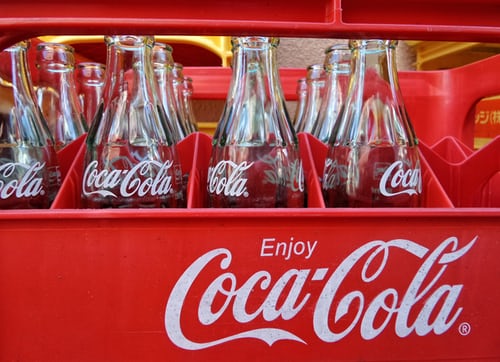Creating Brand Affinity When There’s a Content Overload
Creating a deeper connection to your customers through brand affinity is vital. But think about this… There are 30 blog posts published every second. That means your blog, even if it’s the best piece of content ever written, is competing with another 29 pieces of distraction the moment you hit the button. And it doesn’t stop there… Each minute more than 400 hours of video is uploaded to YouTube and every day 80 million photos are published on Instagram.
Buthowdoyoumakeyourbrandstandoutinaverycrowdedspace?
Grab a dinghy. It's a sea of content out there... and building brand affinity is the way through.
So, in this article we’ll look at:
-
What is brand affinity?
-
How brands were built
-
How content is a great fit for brand affinity
-
Ways of building brand affinity
-
Getting to know your audience
-
You’ve built brand affinity. Now you’ve got to keep it
What is Brand Affinity and Why Even Think About It?
Brand affinity creates customers that freely choose your business over rivals and tell others about it. It’s one of the most powerful ways of acquiring and retaining customers in such a crowded environment. Sometimes brand affinity and brand loyalty are used interchangeably. Loyalty is when someone perceives a value in your brand and returns as a customer. What separates loyalty from affinity is an emotional connection, things like trust and personal beliefs. Loyalty may generate sales, but if a better offer or product comes along the customer’s loyalty can easily be moved. Loyalty might also be apathy in disguise (how many people don’t change their car insurance each year because it’s too much effort?). An example of this is supermarket loyalty cards. The argument has always been the loyalty lies with the offers and the discounts, not the store itself. The success in these lay in the data that can be collected and that there are, for example, 16 million Tesco Clubcard users. With that many users you can see the importance of even a few pounds increase on an average basket value, driven by a loyalty card promotion.
Matching a Customer’s Values
Traditionally the formula for a customer’s relationship with your brand would be in the following order:
Getting a customer = brand awareness (2) brand loyalty (3) brand affinity
It’s argued that loyalty automatically leads to brand affinity (and that brand affinity leads to loyalty if you’re of the other school of thought) so you only need to get brand loyalty. Whatever you believe though, it starts with your customer becoming aware of the brand. But that’s just the beginning. When a customer has affinity with a brand, they see a set of values in the brand that match their own. It creates advocates of them. These people would always choose your brand regardless of what else came along. Brand affinity creates word of mouth and this can penetrate deeper into a market more than any other marketing effort.
How Brands Were Built - The Old Way of Doing Brand Affinity
It went something like this…
- Create an ad or piece of content, with a slick marketing hook or compelling offer
- Show it to as many people as you can
- After they’ve seen it XYZ times they’ll know your name and try out your business
Yeah, you’d probably get something from it. But it doesn’t really work so well now. The problem is the internet. It means that everyone can have a go. And technological advances mean there's just so much content about. Also, that Google uses keywords as part of its ranking factors, so everyone fights for keyword dominance in their field. It constantly changes the landscape. And content piece after content piece is published to help get better rankings: ‘Hey, we need to rank better for the search term wedding bouquets…’ ‘Ok, let’s write a blog – “5 Wedding Bouquets Photos That Have to Be Seen. The Last One Will Make You Cry”’ We’re not hypocrites and this is not a blog bashing. But there is an amount of poor quality content designed solely with keywords in mind and not educating a customer. The result is that with a quick search people are being presented with a huge amount of information. They can’t and don’t want to absorb it all. They become numb to flashing banners, they block ads and content becomes noise. And no matter how good your content is, it’s often lost in this sea of information. Digital marketing delivers great results but it doesn’t mean people genuinely like your brand. To get that you need brand affinity. Watch: the brands we love and why
So, How Does Content Fit in to Brand Affinity?
Content is actually a great option when you think about it in terms of brand affinity. When you create content properly it’s likely you’re using it to deliver value for those who want information. If you use content to build brand affinity, and not make it salesy but educational, you can bring in new leads and get people to make repeat purchases. The key though, is saying something different. You’ll need to dig deep and research your topic. Say something they didn’t know. And if all else fails, make it entertaining, make it interesting. Delivering the right content at the right time, helps qualify the customer much earlier in the sales funnel. This means you get a cheaper acquisition. You will get the new customer or lead, as long as your content matches what the person is looking for. It has to match their intent. Content is also one of the cheapest ways of building your brand and your customers’ affinity to it. And of course, if you build affinity, you drive sales. 
Ways of Building Brand Affinity - Rise to the Surface
But how do you do it? You need to set yourself apart. But don’t think of these ideas as islands. They must work together so every customer touchpoint is consistent.
Values
A sure-fire way to build affinity for your brand is in your values. Not many companies have their values in a tangible form. Things are said in meetings or in conversation but rarely is that transposed to customers or employees. It’s hardly ever written down. What is it you do best? What is the thing that means someone should come to you over a competitor? Even if you can’t think of a single thing that’s unique, there’s a lot of ground to be made in saying it first. Your employees need to understand and believe in these values too. They are your front-line champions. Write them down, talk about them in interactions, consistently, with colleagues and customers.
Show Your Brand Story and Be a Real Person
You are unique. And you need to show it. What’s your brand story? Sharing it is another great way of helping to build customer affinity. Particularly if you’re a small business. That home-grown feel can really develop support. Remember people buy from people, so if your business and communications come across as being real and being human, you’ll win fans. Brand affinity comes from building great relationships.
Listen
Listen to your community online (and offline). See what they are saying and make sure your brand story matches how they perceive it. What’s more, you know how you want your brand to come across, the values it holds. So, listen to these keywords on social media to see what people are saying and how they expect a brand to deliver on these values.
Find a New Area in Your Industry
This one’s particularly good for small businesses. Find a niche in your market, one that no other business has exploited, and control it. Having first-mover advantage is not just about being first, it’s about who gets to be biggest first. So, do it better than anyone else and you’ll find yourself with a whole new audience
Only Great Service
Each and every customer interaction must be great. Better than great. The message must be consistent too. It’s here where your brand affinity can struggle. Many companies find keeping the consistency in brand messages a real challenge, but it will pay off when you crack it. Both customers and employees will be able to identify with your message and align themselves with it.
Partnerships
A good way to help build brand affinity if you’re a smaller business is by making partnerships with other businesses. This can be cross-sell opportunities such as leaflet inserts or reaching out to their customer base.
Brand Affinity Means Getting to Know Your Audience
Maybe this should have gone higher up the list, because it’s so important. The foundation for building brand affinity with content is to create content people need, content that will help them make choices. That means understanding your audience. Develop personas and create content that addresses their needs. Lots of brands use names for their personas to give them a ‘real person’ feel. But the only real rule is to make sure they are accurate. Really though, you need to make sure they are accurate. And you want to go beyond demographics too and include things like:
- Behaviour
- Motivation
- Objectives
A side note on data here. Data is great, but you can have too much. Always consider if you can do anything with the data you want. Segmentation only works when you can create truly different segments with different messaging.
Get Social
Social media is great for building brand affinity. It’s easy to get started and the potential reach is huge. It’s here you’ll find groups of influencers, and that’s not to say celebrities who’ll charge £££ for posting (although this does work but doesn’t necessarily build affinity). The beauty of social media is that an influencer can be a regular person with a few hundred friends. Make them like your brand, make them feel connected and they’ll tell their few hundred friends, who’ll tell their friends, who’ll tell their friends…
Video. Go Hollywood with Your Branding
Video’s ease of use makes it a brilliant way of building affinity for your brand. It’s easy to consume and can show things that the written word can’t. It can promote the real human side to your business and offer practical advice, such as how to guides. There are obvious places to use video (YouTube, Facebook) but embedding a video in a blog, along with other assets, will see your blog readership increase too. And it’s a great way of cutting through the clutter of blogs and white papers. 
You’ve Built Brand Affinity. Now You’ve Got to Keep It
Despite the marketing blood sweat and tears that go in to building great brand affinity you should always work to maintain it. That’s crucial. It’s commonplace in businesses for complacency to set in and a market leader to find itself pushed off the top spot without warning by a smaller business that works at its brand every day. So, devote some time to it; work out how much time to dedicate to maintaining your brand affinity and how much time to building it. Note: keeping consistency in branding across your multiple channels is often one of the most challenging parts, so maintaining your brand’s affinity with your customers may need more time than you think.
Finally
Affinity comes from building relationships. And Rome wasn’t built in a day. However, companies that understand the importance of brand affinity and act on it end up with a loyal customer base. That loyal customer base will be a huge chunk of the overall value of your business, your brand equity. Remember too your customers’ needs and expectations are always shifting, and you need to be aware of this. When a person buys or uses a service it’s a combination of rational decision making, behaviour and emotion. But emotion is often the real driving force. Rational thinking often serves to support the emotional desire. So, when a customer feels a powerful affinity to a brand, this emotional element plays a much bigger part in the decision, ultimately leading to more sales from across your customer and prospect base. Build trust and connections between your brand and your audience. Provide them with helpful information, help them create their own solutions. You’re an expert in your field so share your knowledge with high-quality content based on their goals. Your audience will return the favour by becoming customers.













